Spring cleaning can be done all year round. Here’s how:
You can Reduce, Reuse and "Recycle More. It’s Easy to Do."
No, it’s not spring but the urge to clean out, clear out and de-clutter comes anyway. Once you get started do you actually know what to do with all the stuff? Garbage can? Recycling cart? Yard waste cart? Thrift Store? Drop-off at a local recycling collection event or recycling site?
King County’s Spring Cleaning all year round, is here to show you what to do with all the items you no longer want or need with tips called “The Clean Out”, and to reduce the clutter in the first place with tips called “The Recycling System”.
Now click on the room in your house where you need to apply our Clean Out/Recycling System tips to get rid of clutter:
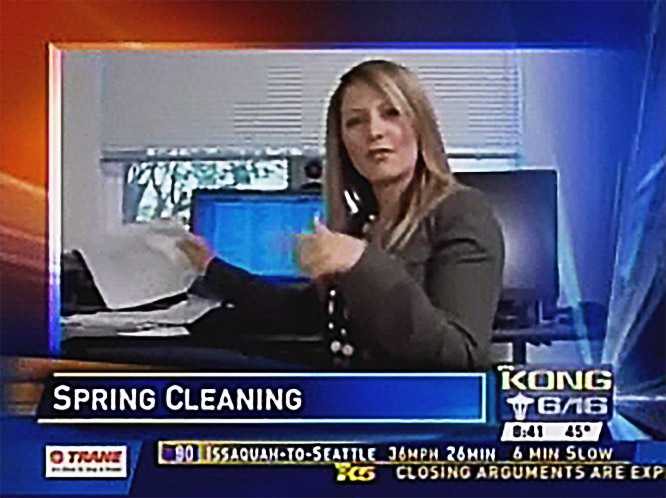
 |
||

|
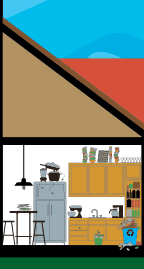
|
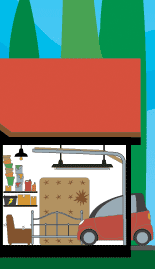
|
Living room, home office, attic or store room
These rooms often serve several purposes. They are a combination office, spare room and store room. Here are tips on how to organize and clean this room up.
The clean out
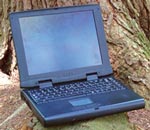
Electronics. As of October 2005, computers, monitors, laptops and TV’s are not allowed in the garbage. Round up all your old computer equipment and cell phones that are past their prime and do one of the following:
- For computers, TV’s, monitors and laptops, recycle them for free at any authorized E-Cycle Washington collection site. You can now recycle your e-readers (including iPads) at E-Cycle Washington locations. The screen size has to be larger than 4” when measured on the diagonal. No smart phones, PDAs and those small items.
- For other equipment such as printers, keyboards, mice, fax machines and cell phones, find your nearest Take it Back Network recycling drop-off location. There may be a fee for these recycling services.
Reducing paper waste. Sign up for electronic billing to minimize paper waste.
- Look for free shredding events in your community.
- When possible, keep paper whole, rather than shredding it, so it’s suitable for recycling.

Junk mail. You can stand over your recycling bin every day as you sort through your mail, or you can go one step further and reduce the amount of junk mail you receive.
- Use Catalog Choice, a free, online opt-out service for unwanted mail.
- Sign up for the free, online Direct Marketing Association Mail Preference Service, operated by the direct mail industry.
- Visit King County’s waste prevention website for more tips on reducing junk mail.
Accumulated magazines, newspaper, books and files. Everyone has piles of magazines and newspapers accumulated. Books and files too. All these materials are recyclable but there are other choices to be aware of.
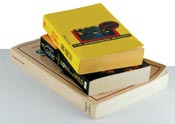
- Donate magazines and newspapers to local schools and day care centers that can use them for art projects and other in-class activities.
- Books should be donated to the local library, thrift store or charity. Hardback books cannot go in the recycling cart.
- Old files can be recycled in the curbside recycling cart.
Electronic media; Audio cassettes, VHS tapes, CD’s and DVD’s. These items are one type of electronic equipment and can be recycled.
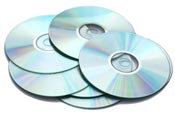
- Find a local recycler in your community by visiting the What Do I Do With…? website.
Fluorescent light bulbs and tubes. The home office isn’t the only place old light bulbs and tubes turn up, but it’s as good a place as any to keep a collection container for burned out lights.

- Fluorescent light bulbs (CFLs) and tubes are not allowed in the garbage because they contain mercury. Visit LightRecycle Washington external link for recycling locations.
- Toss traditional incandescent bulbs in the garbage.
Spare or old furniture, beds and clothing. Pieces of used furniture and clothing are often still usable and should be donated. If your furniture or clothing is no longer usable it goes in the garbage or to the transfer station for disposal.
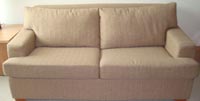
- Post your usable furniture, spare bed or clothing items to websites for sale or giveaway. Try Freecycle or Craigslist.
- Donate these items to local thrift stores. Find locations on the What Do I Do With…? website.
- Recycle your mattress: several businesses break-down used mattresses and recycle the components for a fee. Remember to ask your new mattress retailer if they will recycle your old mattress.
The recycling system
Although most recycling takes place in the kitchen, people with recycling bins placed throughout the home tend to recycle more. Make recycling easier in your home office with these simple tips:
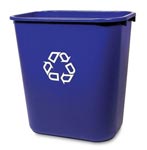
- Get a recycling guide showing recycling do’s and don’ts and post it on or near your recycling container(s) so all family members can reference it. Check with your hauler to get a recycling guide for recycling in your community.
- Add a recycling bin to your home office for all that paper and other miscellaneous recyclable items. You can find great recycling bins at local home improvement and grocery stores near you.
- Empty your recycling bin on a regular basis, like when you’re emptying your household garbage cans. Make this one of the chores for the kids and they’ll take pride in helping out.
Kitchen and pantry
The clean-out
Edible and non-edible food. Dig into your pantry, fridge and freezer and identify food that can be donated, is expired or is no longer edible. Following these tips:

- Donate edible, non-perishable food, such as boxed and canned goods, to local food banks. Search the What Do I Do With…? website to find donation locations near you.
- Have your donation picked up at you house on Saturday, May 14th! Donating to this food drive, provided by the National Association of Letter Carriers, makes it really easy. See www.helpstampouthunger.com for details.
- Toss non-edible food in your yard waste cart so it can be turned into a new product—compost. View food scrap and food-soiled paper recycling guidelines.
- Empty your expired canned goods into your yard waste cart. First, drain the liquids into the sink. Then, rinse the cans or jars and place them in your recycling cart.
Appliances and cooking tools. Do you have appliances that no longer work? What about that unused juicer you got as a gift? Or that toaster that no longer toasts? Spring is a good time to sort out what works and what doesn’t and find new homes for both:
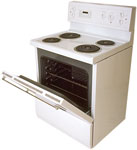
- Post your large or small usable appliance on websites for sale or giveaway. Try Freecycle or Craigslist.
- Recycle large appliances at local recycling locations. Visit the What Do I Do With…? website for a list of locations that accepts them.
- Donate usable small appliances to local thrift stores. If they don’t work, they may be recycled as scrap metal. Visit the What Do I Do With…? website to find the best option for you.
- Use old Tupperware, bowls, pots and pans as storage containers for kids crayons, markers and pencils. Consider using them to help organize the tool bench and collection of nails and screws in the garage.
- Donate old cooking utensils and pots and pans to local thrift stores if they can still be used. If they can’t be used, you can recycle the metal pans and cooking utensils in your curbside recycling cart, but remember to remove all plastic and wood handles.
Plastic bags. Do you have a stash of plastic grocery bags taking over a corner of the kitchen? Here’s how to deal with that mess:
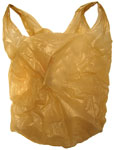
- Stuff clean and dry plastic bags, including dry cleaning bags, toilet paper/paper towel plastic wrap and bread bags into a single bag, tie that bag up, and bring the bag of bags back to your local grocery store. Find a drop-off location near you.
- Use reusable shopping bags. Put a sticky note reminder on your car’s dashboard, kitchen pantry door, or some other obvious place to help remind yourself to bring your reusable bags into the grocery store.
The recycling system
The kitchen is the recycling hub of your home. To keep it clean and free of clutter, devote dedicated space for durable recycling containers and post recycling do’s and don’ts instruction sheet:
- Get a recycling guide showing recycling do’s and don’ts and post it on or near your recycling container(s) so all family members can reference it. Check with your hauler to get a recycling guide for recycling in your community.
- Get a container for collecting basic recycling—Put a box, tub, bin, or bag-with-handles under the sink or in the pantry to collect bottles, cans, plastics and paper.
- Choose a way to contain your food scraps and food soiled paper:
- A brown paper bag or newspaper.
- A reusable plastic container with a lid (like a yogurt tub).
- A metal, plastic or ceramic kitchen container available at your local retailer.
- Put the lidded container under the sink, on the counter, or in the fridge or freezer to collect food scraps and food-soiled paper. And empty it frequently into your curbside yardwaste cart.

Compostable bags: If you choose to use a reusable plastic, metal or ceramic container, try lining your container with an approved compostable bag to contain the scraps and help keep the container clean. Find retailers in your community that carry compostable bags.
- Learn more about recycling food scraps and food-soiled paper.
Garage
The clean out
Packaging material. Online shopping and boxes from electronics and appliances mean loads of cardboard boxes filled with packing materials. Packing materials include packing peanuts, polystyrene and expanded polystyrene (EPS) blocks. Here’s how to put those in their place:
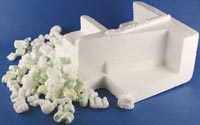
- Recycle flattened cardboard boxes and paper-based packing material in your curbside recycling cart. If you run out of room in the cart stack the flattened boxes next to the cart on collection day.
- Reuse the packing peanuts. Packing peanuts are the small styrofoam “peanuts” found in many packages shipped through the mail and they are not recyclable, but they are reusable. Many gift stores or shipping centers will accept clean packing peanuts free of charge to reuse in packaging or shipping. Drop off packing peanuts at your local mail house. Visit the What Do I Do With…? website to find the location near you.

- Visit the What Do I Do With…? website to find drop-off locations for styrofoam blocks. Acceptable styrofoam includes that used in packing new electronic products, appliances, computers and monitors, as well as picnic/shipping coolers. Styrofoam packaging is also collected at several recycling collection events throughout the year.
Paint and chemicals and insecticides. Do you have old household hazardous products stored in the garage? These are products that contain ingredients that are toxic, flammable, reactive, or corrosive. Here’s how to handle these items:
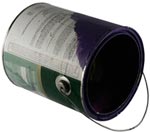
- Unwanted latex paint and water-based stains and clear finishes can now be recycled at any Take it Back Network paint recycling location. If a paint can has less than one-quarter of its contents remaining, you can dry it out in the can and place the can in with your regular garbage. Latex paint is not accepted in liquid form at King County transfer stations or household hazardous waste facilities. Learn more…
- Dispose of old oil-based paints, spray paints, as well as hazardous products such as pesticides, fertilizers and paint thinners at a household hazardous waste collection facility or event.
Accumulated magazines, newspaper, books and files. Everyone has piles of magazines and newspapers accumulated. Books and files too. All these materials are recyclable but there are other choices to be aware of.

- Donate magazines and newspapers to local schools and day care facilities that will use them for art projects and other in-class activities.
- Books can be donated to the local library, thrift store or bookstore. Hardback books cannot go in the recycle cart.
- Old files can be recycled in the curbside recycling cart.
Scrap metal. Recycle scrap metal in your curbside recycling cart. As long as pieces don’t exceed 2 ft. x 2 ft. x 2 ft. and don’t weigh over 35 pounds, you’re good to go.
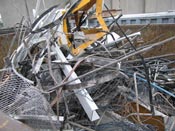
- Visit the What Do I Do With…? website to find recyclers that accept larger scrap metal.
Scrap wood and other construction or remodeling debris. Construction and demolition debris, also known as C&D or CDL, includes materials that results from construction, remodeling, repair or demolition of buildings, roads, or other structures. C&D includes, but is not limited to, wood, concrete, drywall, masonry, roofing, siding, structural metal, wire, insulation and asphalt. Visit the What Do I Do With…? website to find recyclers near you.
Bulky items. This includes couches, beds, furniture and carpet.

- Donate these bulky items, if in usable shape, to local thrift stores.
- Recycle your mattress: several businesses break-down used mattresses and recycle the components for a fee. Remember to ask your new mattress retailer if they will recycle your old mattress.
- Check your local recycling collection events to see if they accept mattresses or other bulky items, check with your garbage hauler for a bulky item pickup, or drop off at your local transfer station for disposal.
Electronics. Computers, monitors, laptops and TV’s are not allowed in the garbage. Round up all your old computer equipment and cell phones that are past their prime and do one of the following:
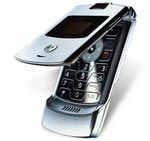
- For computers, TV’s, monitors and laptops, recycle them for free at any authorized E-Cycle Washington collection site. You can now recycle your e-readers (including iPads) at E-Cycle Washington locations. The screen size has to be larger than 4” when measured on the diagonal. No smart phones, PDAs and those small items.
- For other equipment such as printers, keyboards, mice, fax machines and cell phones, find your nearest Take it Back Network recycling drop-off location. A recycling fee may apply.
Oil and grease. You know it shouldn’t go down the drain, but it probably shouldn’t sit in your garage either. Here’s what to do with that large container of cooking grease or used motor oil sitting in the garage.
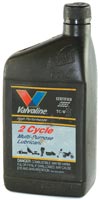
- Find a motor oil recycling location or take it to a hazardous waste drop-off location. Check the Local Hazardous Waste Management Program motor oil recycling website first, there are limitations.
- For residential cooking oil recycling drop-off locations, search “fats, oils and grease” on the What Do I Do With…? website. Your turkey fryer oil could become fuel for the neighbor’s car.
The recycling system
To help organize the garage and keep it that way, try this:
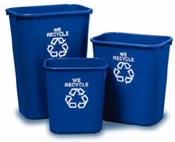
- Get a container for collecting basic recyclables. Put a box, tub, bin, or bag with handles in a convenient and accessible location to collect bottles, cans, plastics and paper.
- Get a recycling guide showing recycling do’s and don’ts and post it on or near your recycling container(s) so all family members can reference it. Check with your hauler to get a recycling guide for recycling in your community.
- Add a couple of extra bins or set aside shelf space for collecting items that can be donated for reuse (reusable clothing, household items, toys, etc.) and for recycling drop-off items (burned out CFL bulbs, household hazardous waste, electronics, etc.).
As soon as those bins or shelves fill up, you’ll know it’s time to take a trip to a donation or recycling site.


 Translate
Translate
